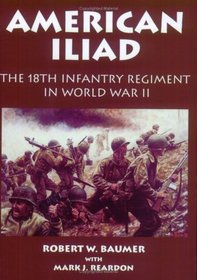Search -
American Iliad: The History of the 18th Infantry Regiment in World War II
American Iliad The History of the 18th Infantry Regiment in World War II
Author:
From the invasions of Algeria, Sicily, and Normandy, to bursting open the very gates of the Reich at Aachen and in the gloomy and bloody Hürtgen Forest, to halting the great German offensive in the Ardennes, and to sealing the fate of the German Army in the Ruhr Pocket, the soldiers of the 18th Infantry Regiment established a battle record ... more »
Author:
From the invasions of Algeria, Sicily, and Normandy, to bursting open the very gates of the Reich at Aachen and in the gloomy and bloody Hürtgen Forest, to halting the great German offensive in the Ardennes, and to sealing the fate of the German Army in the Ruhr Pocket, the soldiers of the 18th Infantry Regiment established a battle record ... more »
ISBN-13: 9780971765054
ISBN-10: 0971765057
Publication Date: 5/2004
Pages: 424
Rating: ?
ISBN-10: 0971765057
Publication Date: 5/2004
Pages: 424
Rating: ?
0 stars, based on 0 rating
Genres:
- History >> Military >> Weapons & Warfare >> Biological & Chemical
- Nonfiction >> Current Events >> Terrorism




